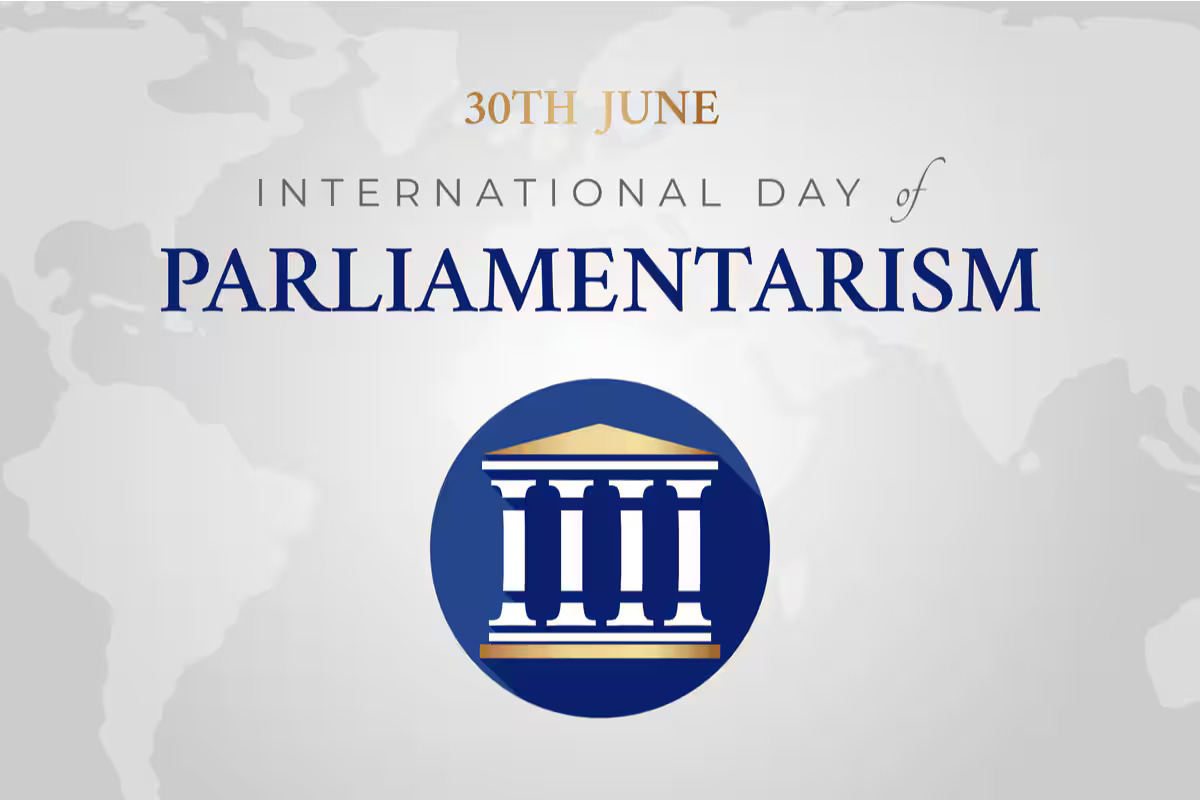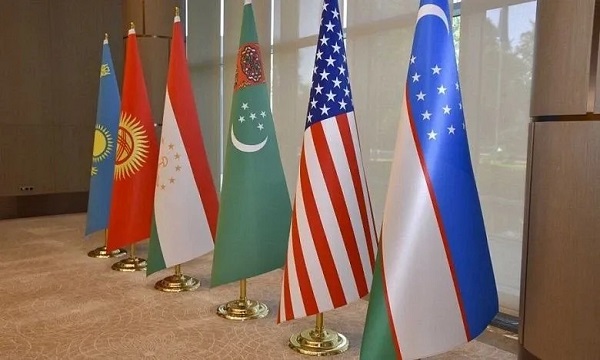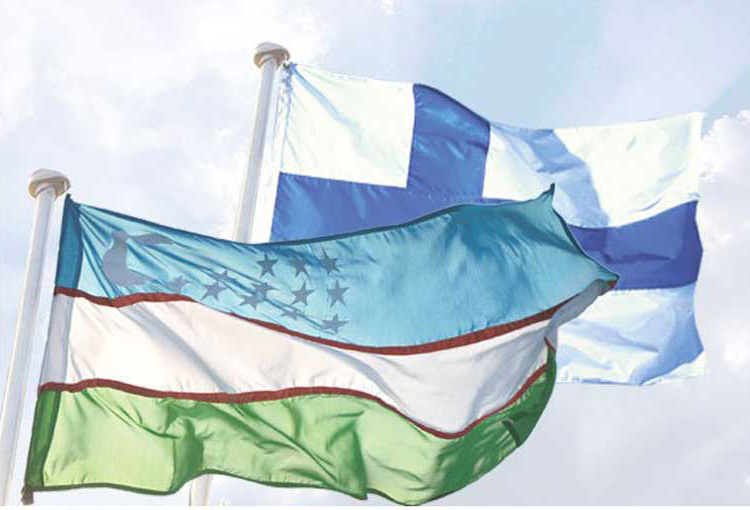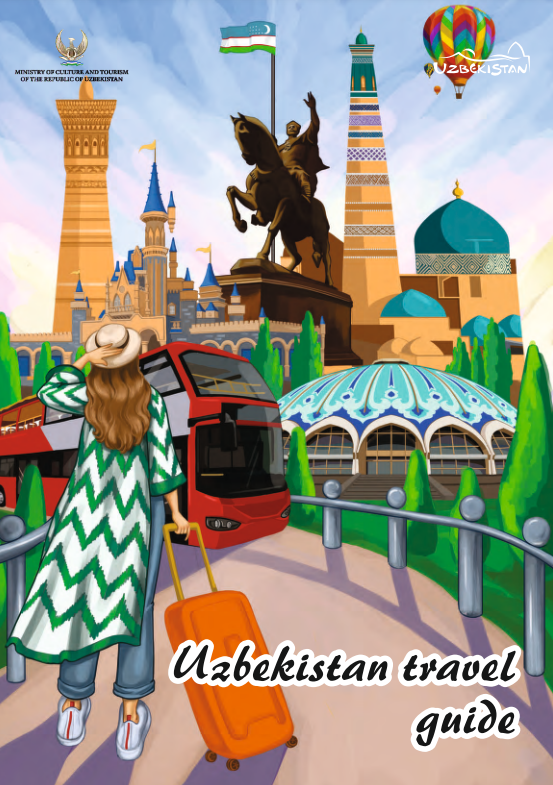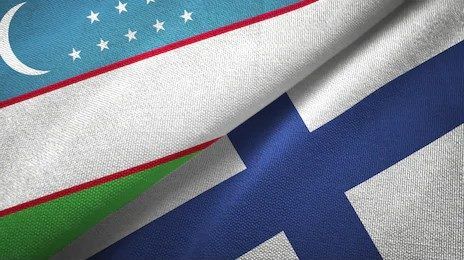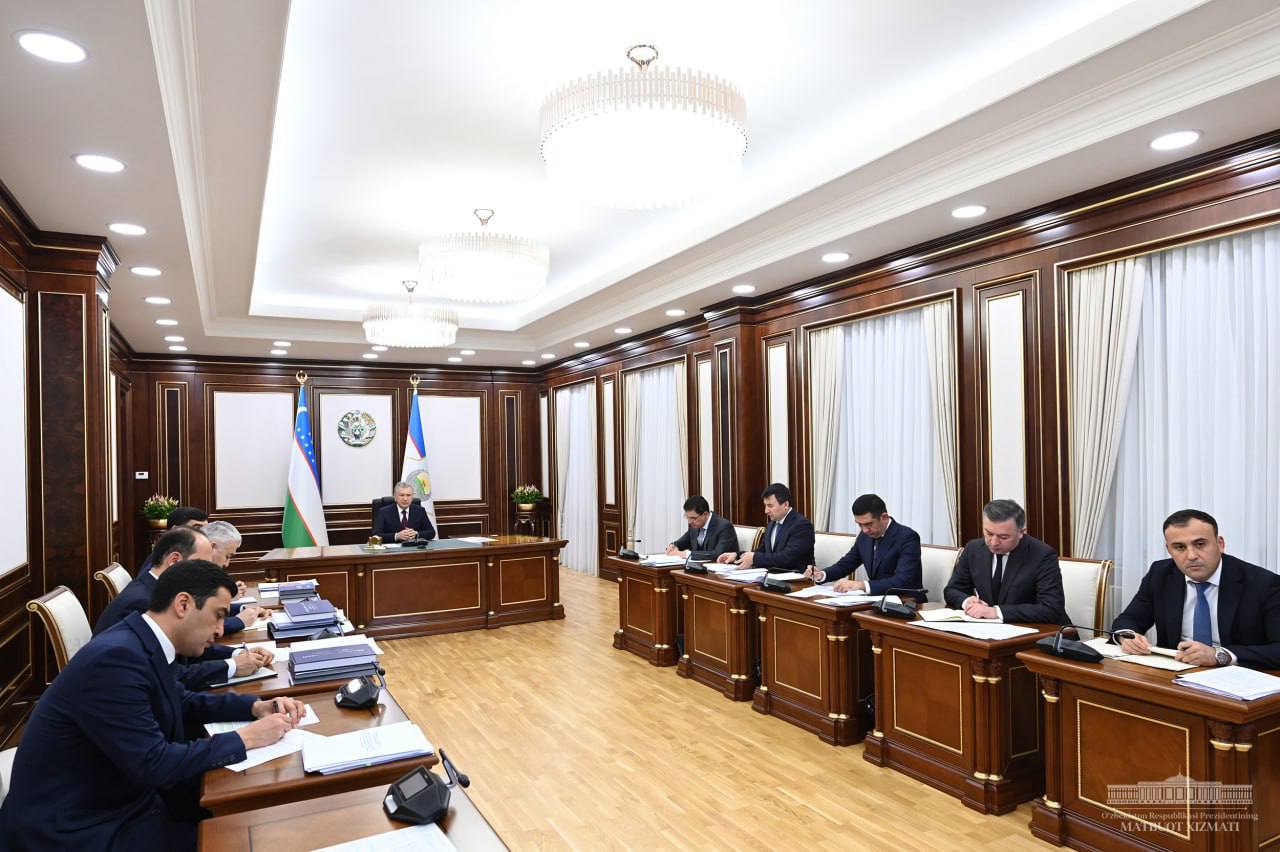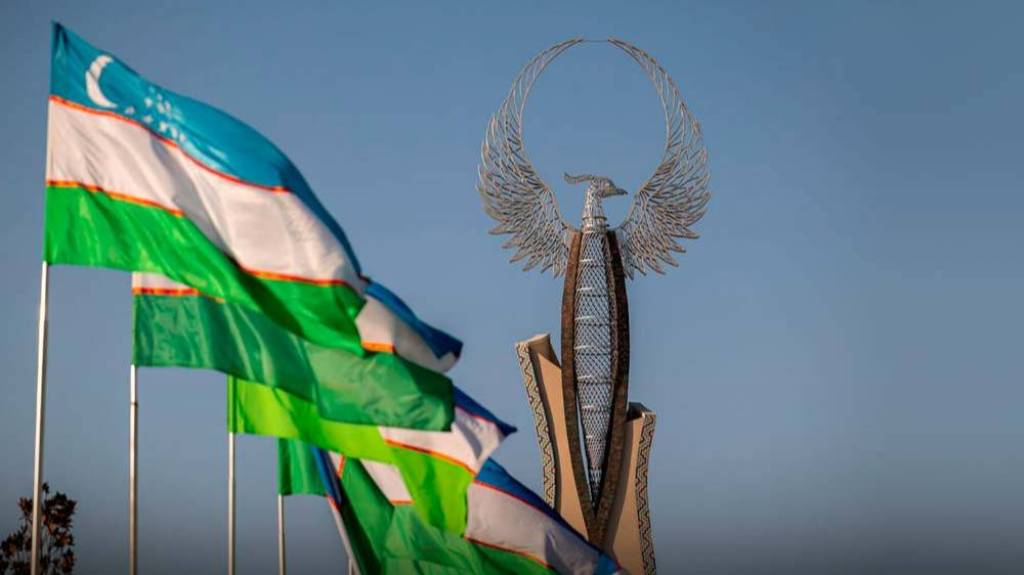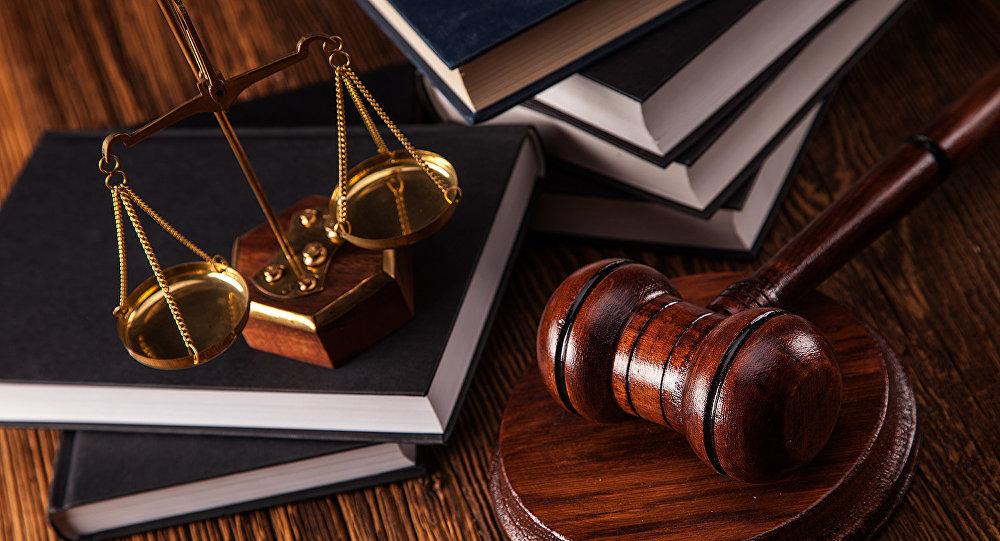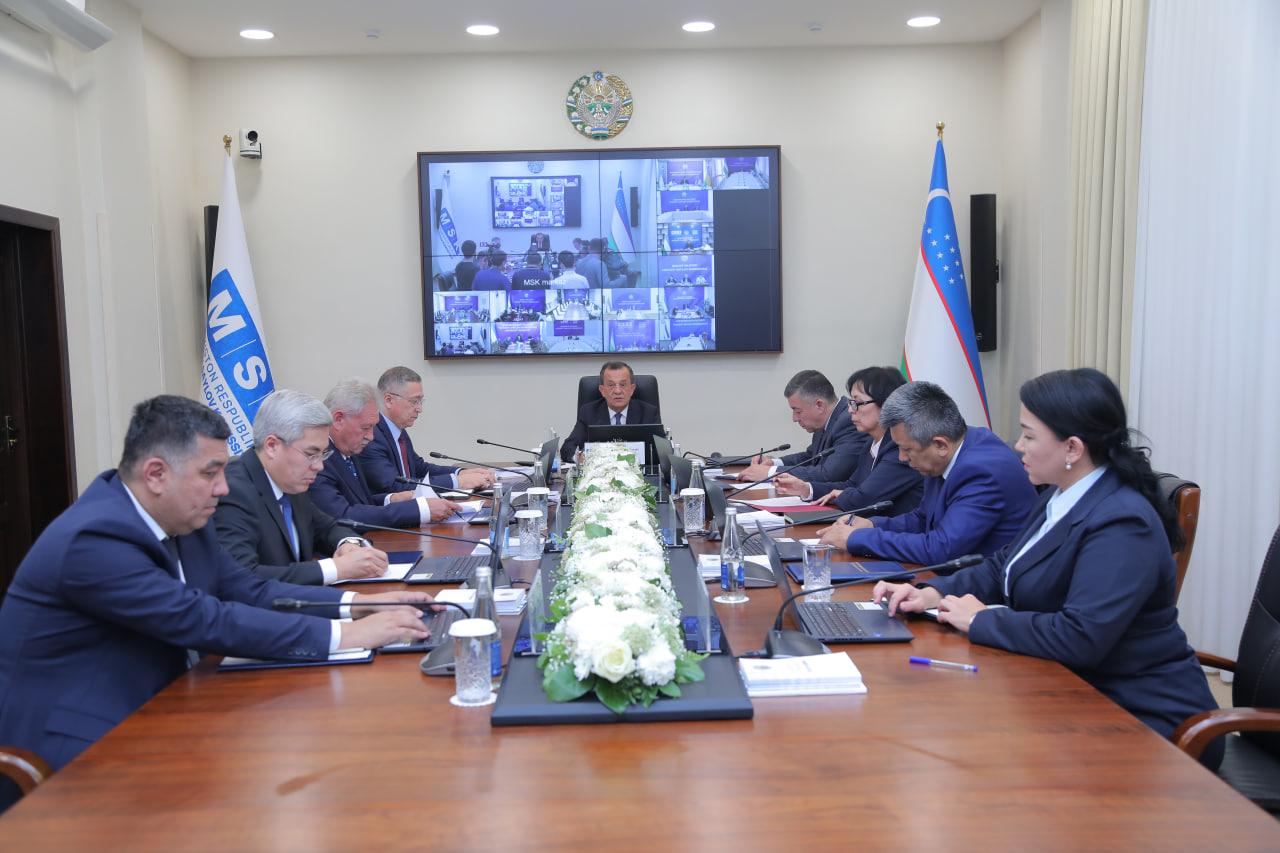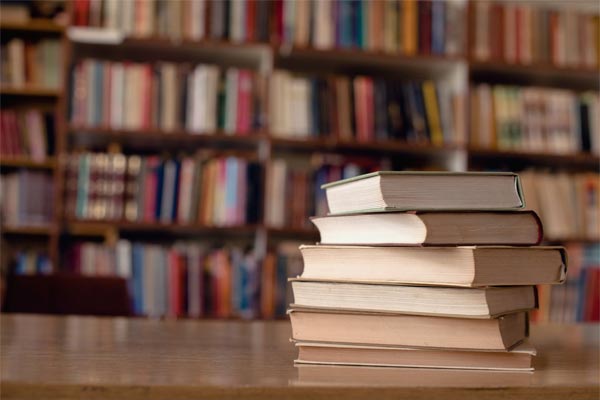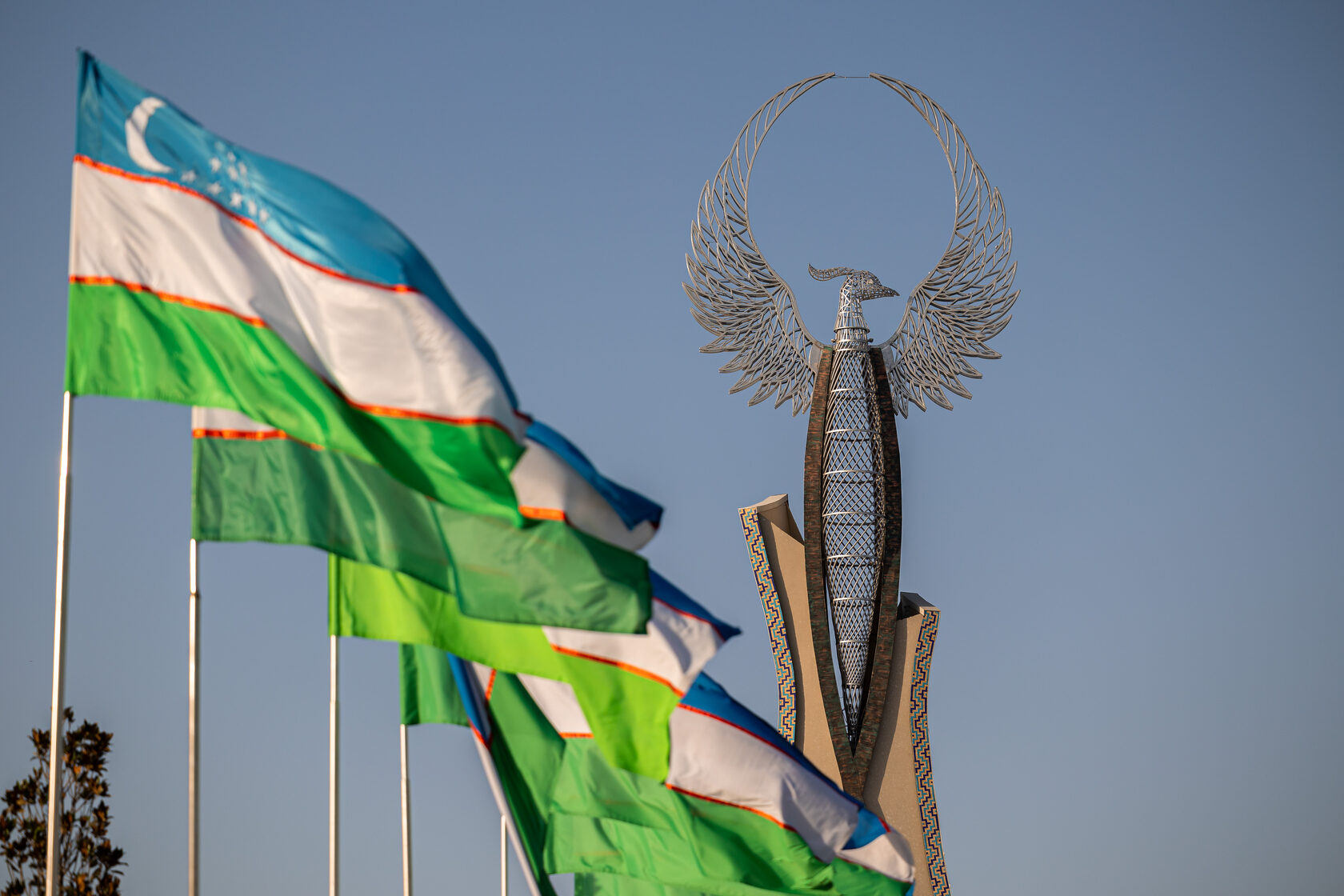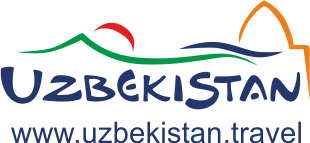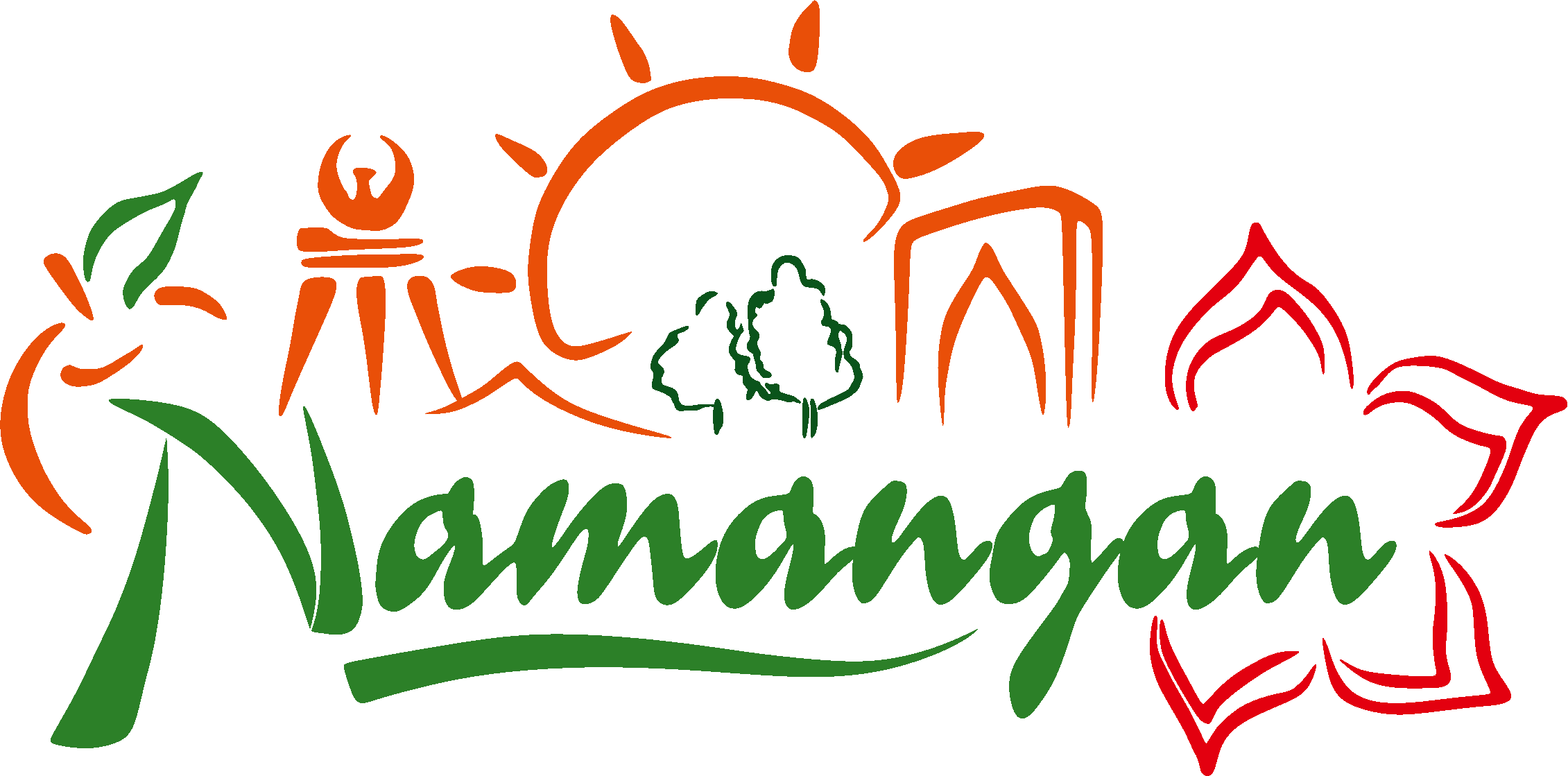Phone
Consular Issues
Phone
Uzbekistan news
We recommend
INTERNATIONAL DAY OF PARLIAMENTARISM: SIGNIFICANCE, CHALLENGES, AND PROSPECTS IN THE GLOBAL DEMOCRATIC AGENDA
📅 27.06.2025
- 2021 - "I say 'yes' to youth in parliament!";
- 2022 - "Civic participation at the heart of parliamentary democracy";
- 2023 - "Parliaments for the planet" (environmental sustainability);
- 2024 - "Parliamentary diplomacy: building bridges for peace and mutual understanding."
- ensuring equal participation in decision-making at all levels of the parliamentary structure;
- institutional transformation of parliaments into gender-sensitive bodies with equal conditions and support mechanisms;
- systematic combating of gender-based violence and discrimination, including forms of political pressure and violence in the public sphere.
Uzbekistan–USA: Strategic Partnership as a Driver of Interregional Cooperation
📅 06.11.2025
President of Uzbekistan Shavkat Mirziyoyev has arrived in Washington on a working visit to participate in the “C5+1” summit of the leaders of Central Asian countries and the United States and to hold meetings with U.S. President Donald Trump, members of the Senate and the House of Representatives, as well as heads of U.S. government departments and agencies.
The C5+1 format, launched in November 2015 in Samarkand, has become an important mechanism for coordination and cooperation in areas such as regional development, economic resilience, environmental protection, energy, and security. Its primary goal is to establish a permanent platform for diplomatic dialogue, exchange views on pressing issues, and strengthen connectivity in the fields of transport, energy, trade, business, and humanitarian engagement. The Joint Declaration on Partnership and Cooperation, adopted at the first meeting, reaffirmed the United States’ commitment to supporting the sovereignty, independence, and territorial integrity of the Central Asian countries.
The first C5+1 leaders’ summit, held in New York in September 2023, gave a strong impetus to advancing the comprehensive agenda of the platform and marked the launch of new initiatives, including the B5+1 Private Sector Business Platform (Almaty, March 2024) and the Critical Minerals Dialogue (February 2024). Since its inception, the format has held 13 ministerial meetings and three high-level gatherings, as well as specialized forums on climate change, development, Afghanistan, and other priority areas.
Uzbekistan has taken an active and constructive role within the C5+1, consistently advocating for the institutionalization of cooperation, enhanced border-security coordination, intensified action on climate and environmental challenges, and the continuation of projects in trade, investment, transport, and energy. Tashkent also supports initiatives related to Afghanistan. Many Uzbek initiatives have been endorsed and implemented in practice, including the establishment of the Virtual C5+1 Secretariat (2021), the TIFA meetings (Samarkand, March 2023), and projects on artificial intelligence and educational cooperation under the C5+1 framework.
The impact of these multilateral initiatives is evident: strengthened regional cooperation has opened new export routes, enhanced investment attractiveness, and created expert-exchange platforms — all contributing to the overall resilience of Central Asia.
Uzbekistan’s active engagement in the C5+1 format is fully aligned with its broader policy of deepening bilateral cooperation with the United States, which continues to expand across all key areas - politics, security, the economy, science, and culture.
Since the establishment of diplomatic relations on February 19, 1992, Uzbekistan and the United States have made substantial progress. A milestone was President Mirziyoyev’s official visit to the United States on May 15–17, 2018, which laid the foundation for a new era of strategic partnership. The President has also met with U.S. leaders on various multilateral platforms — on the sidelines of the Riyadh Summit in May 2017 and during the UN General Assembly sessions in New York in September 2017 and 2025.
The bilateral political dialogue evolved in 2021 into the Uzbekistan–U.S. Strategic Partnership Dialogue, whose sessions are held alternately in the two capitals. The fourth meeting, held in Washington on November 13, 2024, concluded with an agreement to elevate its status to the Expanded Strategic Partnership Dialogue.
The regular visits of senior U.S. officials and special envoys to Uzbekistan further underscore the growing intensity of the partnership.
In 2025, Uzbekistan hosted several high-level American representatives, including Paolo Zampolli, the Special Representative of the U.S. President for Global Partnerships (August 28 – September 1, 2025), and Sergio Góvar, the Special Envoy for South and Central Asian Affairs, accompanied by First Deputy Secretary of State Christopher Landau (October 25–27, 2025).
A clear demonstration of the high level of bilateral relations was the official visit of Foreign Minister Bakhtiyor Saidov to Washington on April 8–10, 2025, during which he met with U.S. Secretary of State Marco Rubio and National Security Advisor Michael Waltz. The sides discussed a wide range of regional and international issues, paying particular attention to strengthening the strategic partnership between Uzbekistan and the United States. Special emphasis was placed on cooperation in security, economic development, regional connectivity, and sustainable growth in Central Asia.
Inter-parliamentary ties are also expanding dynamically. In 2018, the Uzbekistan Caucus was established in the U.S. House of Representatives, with participation from both parties. Regular visits of congressional delegations contribute to the strengthening of parliamentary diplomacy.
Economic and investment cooperation is developing at a robust pace. The bilateral trade turnover and the number of joint projects continue to grow annually. Major American companies such as Air Products, General Electric, General Motors, Boeing, Honeywell, The Coca-Cola Company, and John Deere are successfully operating in Uzbekistan.
During the IV Tashkent International Investment Forum on June 9, 2025, the U.S.–Uzbekistan Business Forum was held with the participation of around 100 U.S. companies. Memorandums of understanding were signed and negotiations held with Boeing, FLS, Visa, NASDAQ, Air Products, Franklin Templeton, Morgan Stanley, and others.
The United States supports Uzbekistan’s accession to the World Trade Organization (WTO). In December 2024, the parties signed a protocol concluding bilateral negotiations on accession — an important milestone in Uzbekistan’s integration into the global trading system.
The cultural and humanitarian sphere constitutes a significant dimension of bilateral cooperation. Sister-city relations have been established between Tashkent–Seattle, Bukhara–Santa Fe, and Zarafshan–Clinton. These municipal partnerships foster cultural and educational exchange, tourism, and business collaboration.
Educational cooperation is also advancing: the Tashkent branch of Webster University (opened in 2019) and the American University of Technology (AUT), established in partnership with Arizona State University, play a key role. On August 30, 2025, an American Corner — a cultural and educational hub promoting academic and scientific collaboration — was inaugurated at AUT.
In October 2023, Tashkent hosted the Education USA Regional Forum with the participation of 65 U.S. universities. The activities of American Councils for International Education (ACIE) have resumed, and work is underway to restore the Peace Corps presence in Uzbekistan.
Transport connectivity has also improved: since July 2017, direct Tashkent–New York–Tashkent flights operated by the national airline have resumed, facilitating business and humanitarian exchanges.
Furthermore, the United States continues to support Uzbekistan’s domestic reforms. Reports by the U.S. Department of State and the Department of Labor highlight progress in combating human trafficking and eradicating the worst forms of child labour. Uzbek cotton has been removed from the lists of goods produced with forced child labour; in December 2020, Uzbekistan was delisted from the “Countries of Particular Concern” regarding religious freedom; and in April 2024, the U.S. Trade Representative (USTR) removed Uzbekistan from the Special 301 Watch List on intellectual property protection.
In summary, President Shavkat Mirziyoyev’s current visit to the United States and participation in the C5+1 Summit will provide a new and powerful impetus for the practical implementation of initiatives on both the multilateral and bilateral agenda. The visit will undoubtedly strengthen political dialogue, accelerate the realization of investment agreements, expand educational and cultural exchanges, and give fresh momentum to joint projects in energy, transport, and digital technologies.
For Uzbekistan, this visit represents another opportunity to reaffirm its status as an active and reliable partner in Central Asia; for the United States, it serves as a platform to deepen engagement in a region of strategic importance for global stability and economic growth.
Dunyo IA
Uzbekistan and Finland: An Economic Partnership Built on Technology and Trust
📅 06.11.2025
Historical Background
The history of Uzbek - Finnish relations dates back to the early 1990s, when Finland became one of the first countries to recognize the independence of the Republic of Uzbekistan - on 30 December 1991. Just two months later, on 26 February 1992, diplomatic relations were officially established, marking the beginning of a new chapter based on mutual respect, trust, and a shared commitment to technological progress.
The first high-level visits in 1992 laid the foundation for political dialogue. During that year, Uzbekistan took part in the signing ceremonies of the OSCE Helsinki Final Act and the Paris Charter. In October of the same year, Finnish President Mauno Koivisto paid an official visit to Tashkent, further consolidating the partnership. Since then, cooperation between the two countries has developed steadily across political and economic spheres.
Legal and Institutional Framework
Today, the legal framework governing Uzbek-Finnish relations comprises eight active documents, including two interstate and six intergovernmental agreements. These include the 1992 Agreements on Mutual Protection of Investments and on Trade, Economic, and Technological Cooperation, as well as treaties on air and road transport (1996 and 1997) and agreements on avoiding double taxation and on customs cooperation.
New initiatives reflecting the modern stage of partnership are under consideration - such as a draft agreement on visa exemption for holders of diplomatic passports, a memorandum on cooperation in environmental protection, and a protocol on consultations between the foreign ministries.
Cooperation Priorities: Technology, Ecology, and Innovation
Finland, recognized globally as a leader in innovation, sustainable development, and green technologies, serves as a valuable model for Uzbekistan in its transition toward a digital and energy-efficient economy.
In 2017, a business delegation of nine Finnish companies specializing in engineering, agribusiness, telecommunications, and logistics visited Uzbekistan to participate in the AgroWorld Uzbekistan international exhibition. This visit gave new impetus to direct business-to-business engagement.
In April 2019, Tashkent hosted a delegation led by Mikko Koiranen, Deputy State Secretary of Finland for Foreign Economic Relations. The delegation included 29 representatives from leading companies and organizations - such as Nokia Siemens Networks, ABB, Wärtsilä, Uponor Infra, Tikkurila, ISKU, and Airbus Defense and Space. Discussions focused on implementing Finnish technologies in Uzbekistan, joint energy and raw material processing projects, and opportunities in smart cities and water management.
Later, in November 2019, Antti Koskelainen from the Finnish export credit agency Finnvera visited Tashkent, marking an important step toward deeper financial and investment cooperation. Meetings with the Ministry of Investment, Industry and Trade, the Ministry of Finance, and the Agency for State Asset Management addressed mechanisms for crediting and insuring Finnish export operations in Uzbekistan.
Trade: A Threefold Growth in One Year
Economic cooperation between Uzbekistan and Finland continues to expand. The two countries enjoy Most-Favored-Nation trade status, and regular meetings of the Joint Intergovernmental Commission on Trade, Economic, and Scientific-Technical Cooperation (five sessions to date, the latest held in Tashkent in February 2023) ensure a dynamic dialogue.
Trade turnover has shown remarkable growth in recent years: from USD 48.45 million in 2020 to USD 151.7 million in 2024 - an increase of over threefold. This upward trend reflects intensified business ties and growing interest among Finnish companies in the Uzbek market.
Investment and Business Cooperation
Finland is viewed in Uzbekistan not only as a trading partner but also as a source of innovation and investment. Currently, 14 enterprises with Finnish capital operate in Uzbekistan - four joint ventures and ten with 100% foreign ownership - active in sectors such as electronics, software, energy, agriculture, food processing, chemicals, and telecommunications equipment.
Finnish businesses are showing strong interest in renewable energy, waste recycling, eco-construction, water management, and sustainable agriculture. Uzbekistan, in turn, offers attractive conditions for investors - tax incentives, developed industrial infrastructure, and access to a 75-million-strong Central Asian market.
Finland’s Economic Potential: Opportunities for Partnership
Finland is one of Europe’s most advanced and innovative economies, known for its high living standards, sound macroeconomics, and strong industrial base. In 2024, its GDP exceeded USD 320 billion, with GDP per capita around USD 58,000. The economy is well-balanced, with services accounting for over 70%, industry 27%, and agriculture 2.5%. Inflation remains one of the lowest in Europe - around 3% - ensuring a stable and predictable business environment.
For Uzbekistan, cooperation with Finland opens wide-ranging opportunities for industrial, investment, and technological partnership, including:
- Energy: joint projects in renewable energy, smart grids, and energy storage; development of solar panel and wind equipment manufacturing.
- Water and Environment: Finnish expertise in water purification, waste processing, and efficient water management, particularly relevant for agriculture and urban infrastructure.
- Engineering and Electronics: creation of joint ventures in industrial equipment, automation systems, and telecommunications.
- Construction and Green Materials: Finnish participation in energy-efficient building projects, production of eco-friendly insulation and finishing materials, and smart home systems.
- Education and Science: joint engineering and IT education programs, establishment of research laboratories, and introduction of dual education models based on Finnish experience.
- Agro-Industry: cooperation in precision farming, agricultural digitalization, and production of eco-friendly export-oriented goods.
Finland’s experience in sustainable development and digital transformation makes it a strategic partner for Uzbekistan’s “green economy” agenda and industrial modernization. At the same time, Uzbekistan - with its abundant natural resources, young workforce, and expanding domestic market - offers Finnish companies favorable conditions for localization and regional expansion.
A Look Ahead
The partnership between Uzbekistan and Finland goes beyond traditional economic cooperation. It stands as an example of how innovation and sustainability can form the foundation of long-term, mutually beneficial relations. Joint projects in digitalization, green energy, and education are paving new avenues for the exchange of expertise, technologies, and investments.
Finland regards Uzbekistan as a reliable partner in Central Asia, while Uzbekistan views Finland as a strategic ally in advancing its “smart growth” model and building a knowledge-based economy.
The synergy between Finland’s pragmatic northern experience and Uzbekistan’s dynamic eastern development creates a powerful foundation for further strengthening bilateral relations - grounded in trust, innovation, and mutual respect.
Uzbekistan and Finland: Digital Groundwater Modeling as a Contribution to Climate Resilience in Central Asia
📅 06.11.2025
Amid growing water scarcity and climate instability in Central Asia, Uzbekistan and Finland are implementing a unique form of scientific cooperation that combines digital innovation with sustainable water resource management.
In 2021, the Ministry of Mining Industry and Geology of the Republic of Uzbekistan and the Geological Survey of Finland (GTK) signed a Memorandum of Understanding aimed at the rational development of natural resources through advanced technologies. Today, this project stands as an example of scientific diplomacy that unites European expertise with Uzbekistan’s potential.
From Paper Maps to Digital Models.
For many years, hydrogeological maps of Uzbekistan existed only in paper form. Within the framework of the joint project, they were digitized using the ArcGIS platform, creating a unified national groundwater database. This digital transformation enables specialists to monitor aquifer conditions, analyze water balances, and forecast the impacts of climate change.
Finnish experts conducted a series of training programs for Uzbek specialists, introducing modern methods of digital mapping and data processing. This strengthened the professional capacity of the sector and laid the foundation for scientifically grounded and transparent water resource management.
Scientific Practice: Experimental Site in Akhangaran.
An experimental site was established in the Akhangaran district of the Tashkent region, where joint research teams conducted geophysical studies and developed digital models of groundwater flow. The obtained data help predict groundwater levels, plan water supply systems, and identify areas vulnerable to drought.
The use of the MODFLOW software package made it possible to create models that provide scientifically based solutions for water resource allocation — particularly important for regions with limited water reserves.
European Partnership for Climate Resilience.
Cooperation with Finland is part of a broader European agenda aimed at supporting climate adaptation and sustainable development in Central Asia. By combining European technologies with Uzbekistan’s scientific resources, the project demonstrates how international partnerships can strengthen ecological security and water stability.
The results of the joint work were published in the journal Water (Scopus) under the title “Assessing Climate Change Impacts on Groundwater Recharge and Storage Using MODFLOW in the Akhangaran River Alluvial Aquifer, Eastern Uzbekistan.”
Furthermore, new areas of cooperation have opened — with the University of Padua (Italy) in geological risk monitoring, and with the Belarusian Scientific and Production Center for Geology in groundwater observation.
Looking Ahead.
The joint project between Uzbekistan and Finland is more than a transfer of technology — it represents a step toward creating a new culture of rational water use and responsible climate action. The establishment of a national digital hydrogeological database will become a key element in the country’s environmentally sustainable development.
As Europe and Central Asia continue to strengthen cooperation in water, energy, and climate, the Uzbek-Finnish project serves as a model of how scientific initiatives can deliver tangible environmental and social benefits.
Investments’ implementation, poverty and unemployment reduction set as priority tasks in Bukhara
📅 02.12.2024
On November 29, President Shavkat Mirziyoyev convened a meeting dedicated to identifying additional opportunities, increasing investments and jobs in Bukhara region.
Previously, the economy of this region was mainly linked to agriculture. However, over the past seven years, the region has attracted more than $4 billion investments, enabling development of such industries as energy, electrical engineering, chemicals, pharmaceuticals, textiles and leather. In the past period of the current year, 1.5 million foreign tourists visited Bukhara.
The visit of the Head of State to the region on May 31-June 1 gave a new impetus to its development. All the tasks outlined during the visit will be fully accomplished by the end of the year.
At the same time, it is important to ensure further growth of economic indicators in 2025, increase employment and well-being of the population. To this end, the working group studied additional opportunities of the region and factors hindering entrepreneurship development.
The critical meeting emphasized that the region's economic performance does not correspond to its potential. Work on investment absorption, poverty and unemployment reduction was recognized as unsatisfactory.
In this regard, the hokims, their deputies and sector heads will be put on emergency duty for a period of six months. The entire focus will be on improving these three areas. Special attention will be paid to implementing 70 driver projects based on the experience of Saikhunobad, Uychi, Zarbdar and Gijduvan. They will provide income to 150 thousand people and lift 40 thousand people out of poverty.
As it was mentioned, each district of the region can be specialized for a certain industry. For example, Peshku and Shafirkan - for production of construction materials and textiles, Kagan city, Alat and Jondor districts - for food industry, Gijduvan and Romitan - for chemical industry. This will make it possible to implement projects of entrepreneurs worth $150 million, create 411 small enterprises and provide 12 thousand jobs.
Four textile factories are planned to be built in Vabkent, Karakul, Jondor and Alat at a total cost of $320 million. This will double the volume of finished knitwear and textile products and create 5,000 jobs.
Next year, the number of foreign tourists is expected to reach 2.2 million and tourism exports are expected to reach $600 million. This will be supported by opening 69 new hotels and 2 thousand handicraft stores.
It is planned to develop additional 20 thousand hectares of land, which will allow to grow additional 100 thousand tons of agricultural products and provide employment for 2 thousand people. Trees and food crops will be planted on vacant homestead land, along canals and field edges.
Another opportunity is pastures. In Bukhara region their area exceeds 2 million hectares. As part of the decisions made at a recent meeting on horticultural development, it is planned to grow pistachios on unused pastures.
Hokim of Bukhara region presented plans to utilize these opportunities. In general, next year 106 projects will be implemented, 105 thousand permanent jobs will be created, exports will be increased by $350 million due to foreign investments worth $2 billion.
The Head of State pointed out the insufficiency of these plans and instructed to intensify efforts and improve results. He tasked to revise the proposals again and draft a relevant resolution.
RELIGIOUS TOLERANCE AND INTERFAITH HARMONY IN UZBEKISTAN
📅 06.11.2025
The declaration of independence and the commitment of the Government of Uzbekistan to the ideals of democracy, the choice of a secular path of development of society have gradually made it possible to create equal legal conditions for the existence of religions in general and religious groups in particular.
In the religious sphere, this large-scale work is carried out by the relevant state bodies and civil society institutions and is aimed at ensuring citizens' constitutionally guaranteed right to freedom of conscience; strengthening religious pluralism, tolerance and interfaith dialogue.
One of the significant results of joint work is the adoption in December 2018 by the UN General Assembly of a special resolution "Enlightenment and Religious Tolerance".
The adoption of the resolution was a practical implementation of the initiative of the President of the Republic of Uzbekistan Shavkat Mirziyoyev, put forward at the 72nd session of the UN General Assembly. The main goal of the proposed resolution is "to ensure universal access to education, the elimination of illiteracy and ignorance."
It is noteworthy that the resolution was not only unanimously supported by all UN member states, but also adopted with the co-authorship of over 50 countries. This testifies to the high recognition by the international community of the relevance and timeliness of the initiative of the President of Uzbekistan.
In recent years, significant changes have taken place in Uzbekistan and large-scale reforms have been implemented in many areas, including in the religious and educational sphere.
A number of legislative acts have been adopted aimed at further improving activities in the religious sphere.
In order to deepen the study of Islam and teach its scientific foundations, the International Islamic Academy of Uzbekistan was created. The Academy specializes in teaching secular and religious knowledge, training qualified personnel in the interpretation of the Koran, Islamic law, religious dogmas and hadiths.
In Uzbekistan, unique mechanisms are used to revive national and religious values, study and promote the rich scientific and spiritual heritage of great ancestors, and strengthen religious tolerance in society. The activities of the Center for Islamic Civilization, international research centers of Imam Bukhari, Imam Termizi, Imam Maturidi, Bahauddin Naqshbandi have been established.
As a result of large-scale reforms and transformations carried out in the religious sphere, the Higher Madrasah Mir Arab in Bukhara, the School of Hadith Studies in Samarkand, the Madrasah of Imam Termizi and the Islamic Institute named after Imam Termizi in Termez began their activities.
In addition, the Charitable Public Fund "Vakf" was established under the Office of Muslims of Uzbekistan, whose tasks include financing work on the reconstruction of mosques, holy places of pilgrimage and visits, other objects, providing material and technical support and providing material support to employees in this field. The Fund received the opportunity to dispose of funds coming to 3 accounts: charitable, vakf and zakat (ushr, fidya, fitr).
In accordance with the adopted legislative acts, in order to further improve the activities of the Committee on Religious Affairs, a new composition of the Council for Religious Affairs has been approved, which is a public advisory body under the Committee.
The activities of the Council are inextricably linked with ensuring freedom of religion in the country, respecting the rights of religious organizations and believers. The initiatives of the members of the Council are fully implemented within the framework of measures taken by the country's leadership in the field of protecting and further strengthening the rights and freedoms of religious movements.
The significance and timeliness of the measures taken by the country's leadership served as the basis for holding the international forum "Dialogue of Declarations" in Tashkent, Samarkand and Bukhara on May 16-20, 2022. This event was part of the systematic and consistent efforts of Uzbekistan to practically implement the principles and provisions enshrined in the Special Resolution of the UN General Assembly "Enlightenment and Religious Tolerance", adopted in 2018 on the initiative of President Shavkat Mirziyoyev.
It is especially worth noting that at the past 76th session of the UN General Assembly, the "Bukhara Declaration" adopted following the results of this forum was recognized as an official UN document. As an official UN document, the document has been translated into 6 languages and distributed among the UN member states, as well as specialized agencies of the organization.
The second round of the international forum will be held on September 10-13, 2025 with the assistance of several NGOs from the USA. The participants of the event also visited Samarkand, where they got acquainted with the activities of the reconstructed complex of Imam Bukhari.
Uzbekistan has special dates that are closely related to the religious life of believers: these are "Day of Friendship of Peoples", celebrated on July 30, and "International Day of Tolerance", celebrated on November 16. Both of these dates are marked not only by holding events, but also by awarding the corresponding badges - the badge "Khalklar dustligi" ("Friendship of Peoples") has been awarded since 2021, and the badge "Diniy bagrikenklik" ("Religious Tolerance") began to be awarded to distinguished citizens since 2023. Among the awardees are representatives of various religious denominations of Uzbekistan.
At the same time, Uzbekistan attaches great importance to the preservation of religious and spiritual heritage, the enrichment of existing funds, the creation of necessary conditions for local and foreign researchers to work with historical sources, and the comprehensive study of historical and cultural heritage.
Today, in the country, in order to ensure interethnic and interfaith harmony in society, a legislative framework has been created that provides for the observance of the rights and legitimate interests of citizens.
The Constitution of the Republic of Uzbekistan enshrines the norm on freedom of religion for every person. Attention is also paid to improving and liberalizing national legislation in the field of religion. The procedures for obtaining permission for the production, import and distribution of religious literature have been simplified. The procedure for state registration of religious organizations has been further optimized.
Currently, the new Law "On Freedom of Conscience and Religious Organizations" is in force, which contributes to ensuring the constitutional rights of citizens of the country to freedom of conscience and religion.
Noting the fundamental innovations in the Law as a consistent continuation of large-scale reforms in the religious and educational sphere, special attention should be paid, first of all, to the creation of favorable conditions for ensuring freedom of conscience for every person, and clarifying law enforcement practice.
Currently, 2373 religious organizations of 16 religious denominations operate in Uzbekistan. Of these, Muslim organizations - 2174, which is 92 percent of the total number.
There are also 181 Christian organizations, 8 Jewish communities, 7 Baha'i communities, one Krishna society and one Buddhist temple, as well as the interfaith Biblical Society of Uzbekistan operating in Uzbekistan.
Recently, 134 religious organizations have been registered in Uzbekistan, including 3 higher and one secondary specialized Islamic educational institutions in Bukhara, Samarkand and Termez, 105 mosques and 25 non-Islamic organizations of 7 different religious denominations.
At the same time, the national legislation of Uzbekistan does not provide for any restrictions on the number of religious organizations or the terms of their registration.
Religious organizations operating in the republic, along with other public organizations, actively participate in spiritual and educational work, make a significant contribution to improving the spirituality of society, and forming strong beliefs in young people based on patriotism, as well as interfaith and interethnic tolerance.
It should be noted that religious policy in Uzbekistan is based on the principles of the secular nature of the state, religious tolerance and equal treatment of all religions. In the republic, representatives of various nations and ethnic groups professing Islam, Christianity, Buddhism, Judaism and other religions carry out their activities on equal terms.
All conditions have been created for adherents of each denomination, allowing them to freely and unhindered practice their religion.
Believers freely pray in mosques, churches, synagogues, observe fasting, and also make pilgrimages. Religious organizations have the right to own territory, publish literature, train their religious ministers, and organize pilgrimages to holy places.
The freedom of religion guaranteed by the national legislation of Uzbekistan has created all the necessary conditions for meeting the religious needs of all citizens - representatives of 136 national and ethnic groups.
Representatives of different faiths freely celebrate all religious holidays. Thus, from year to year, Kurban-Hayit and Ramadan-Hayit are celebrated on an increasingly large scale among Muslims, Easter and Christmas - among Christians, Pesach, Purim and Hanukkah - among Jews, Navruz - among Baha'is, as well as celebrations dedicated to Buddha and Krishna and other major events.
Believers make pilgrimages to holy places: Muslims to Saudi Arabia to perform the Hajj and Umrah rituals, Christians - to Russia, Greece and Israel, Jews - to Israel.
Over the years of independence, more than 484 thousand Muslims have made pilgrimages to Saudi Arabia, including 188 thousand - Hajj and 296 thousand - Umrah, more than 3.2 thousand Christians and Jews have visited religious shrines in Israel, Russia, Turkey, Italy, Georgia, Greece.
To meet the spiritual needs of society, a large number of religious literature of various orientations is published annually. To fully cover the religious life of Uzbekistan, a number of newspapers and magazines are published, including the newspapers "Islom nuri", "Slovo zhizni", the magazines "Khidoyat", "Vostok svyshe".
Today, in Uzbekistan, on a systematic basis, a set of measures is being carried out to protect the population from the negative influence of destructive ideas that reflect radical extremist ideology and religious fanaticism.
An important step in this direction was the application of acts of pardon. In particular, since 2017, 29 decrees of the President of the Republic of Uzbekistan have been adopted on pardoning persons who have committed crimes.
It should be noted that in recent years, within the framework of the consistent policy pursued in Uzbekistan in the field of protecting the rights and freedoms of citizens, special attention is paid to measures aimed at protecting the rights, freedoms, honor and dignity not only of citizens residing in the republic, but also of our compatriots who find themselves in difficult life situations in foreign countries.
Unfortunately, some of our citizens, who have fallen under the influence of alien ideas, believing false promises, in different years joined the ranks of international terrorist organizations in armed conflict zones abroad. Spouses, fathers of some women returned as part of humanitarian operations, died in the course of armed clashes.
Given this circumstance, on the instructions of the President of Uzbekistan, five humanitarian actions "Mehr" were successfully carried out in 2019-2021, within the framework of which more than 500 citizens of the republic, mainly women and children, were returned to their homeland from the zones of armed conflicts in the Middle East and in Afghanistan.
In order to further assist in their speedy reintegration and rehabilitation, a set of measures has been implemented at the state level to provide timely medical, psychological, material and moral assistance. To date, all returnees have been provided with the necessary conditions for their adaptation to peaceful life and integration into society, access to educational and other social programs has been provided, including through the provision of housing and employment.
In general, it is worth noting that an important distinguishing feature of the religious life of modern Uzbekistan is the inadmissibility of establishing advantages or restrictions for one religion in relation to other denominations.
One of the main priorities of reforming society in order to ensure interethnic harmony and religious tolerance is to ensure and protect the rights and freedoms of citizens, their equality before the law regardless of race, gender, nationality, language, social origin, beliefs, religion, personal and social status, which are enshrined in the Constitution of Uzbekistan.
Uzbekistan consistently and steadily fulfills its international obligations in the field of ensuring religious freedoms within the framework of international human rights treaties.
As is known, Uzbekistan has acceded to more than 70 major international human rights instruments. Accession to these documents contributed to the creation of an effective human rights protection system in Uzbekistan.
It is important that Uzbekistan's policy in the field of religion, aimed at strengthening interfaith dialogue and religious tolerance in society, is an important factor of stability and security.
In conclusion, I would like to emphasize that the large-scale reforms being carried out in the country are a clear confirmation of the consistent continuation by the President of the Republic of Uzbekistan of the implementation of the principle "Everything in the name of man, in the name of his future."
Committee on Religious Affairs
Uzbekistan: New reforms to improve the penal enforcement legislation and their practical results
📅 24.06.2024
In recent years, taking into account international standards and advanced foreign experience, ensuring the protection of the rights of convicts, respect for their honor and dignity, education of morality and conscientious work for further social adaptation in society upon release, a fundamental improvement of the penal enforcement legislation in the Republic of Uzbekistan has been carried out with the introduction of effective legal mechanisms.
Currently, there are a number of international conventions and provisions aimed at protecting the rights of convicts, which are regulated by the International Covenant on Civil and Political Rights. (1966), "Convention against torture and other cruel, inhuman or degrading treatment or punishment" (1984), "Declaration on the protection of all persons from torture and other cruel, inhuman or degrading treatment or punishment" (1975), "Standard minimum rules for the treatment of convicts (Nelson Mandela rules)" (2015), "UN rules for the protection of minor children deprived of liberty " (1990), "Basic principles of the treatment of convicts" (1990).
Based on the norms of these international documents developed and adopted by the international community on standards for the treatment of convicts, systematic work is underway in the country to humanize execution and reduce negative consequences during their execution, as well as strengthen the legislative, organizational and legal framework for the protection of human rights, the implementation of international human rights standards into national legislation and other important norms human life activities that have been accepted for implementation by the Republic of Uzbekistan as a subject of the above-mentioned and other international treaties.
It is important to note that "Standard minimum rules for the treatment of prisoners" of UN 1955 are generally recognized minimum standards for the detention of prisoners and have great importance and influence on the improvement of legislation, criminal law policy and the practice of penitentiary institutions around the world.
The revised text of these standard minimum rules of December 17, 2015 at the 70th session of the UN General Assembly № A/RES/70/175 was unanimously adopted in the form of a resolution. These Rules became known as the "Nelson Mandela rules" as a sign of respect for his memory after the death of the famous statesman, the President of South Africa, who outlined these rules based on the experience of spending a long part of his life in prison.
It is also necessary to pay attention to the fact that, following the visit to Uzbekistan of the Special Rapporteur of the UN Human Rights Council, the topic "Promotion and protection of human rights and fundamental freedoms in the fight against terrorism" recommendations were made to bring the legislation of the Republic of Uzbekistan into line with the minimum standard rules for the treatment of prisoners (Nelson Mandela rules), in order to improve the conditions of detention of convicts in penal institutions, to ensure the rights to freedom of religion, which formed the basis of the “Road maps”, developed in accordance with the National Action Plan of the Republic of Uzbekistan.
In order to ensure the fulfillment of these tasks, the conditions of detention of convicts in penal institutions of the Republic of Uzbekistan are considered on the basis of the requirements of the standard minimum rules for the treatment of prisoners (Mandela rules), which are gradually being implemented in accordance with these rules.
On the basis of international standards of the rights and duties of convicts, taking into account the best practices of foreign countries, the system of execution of punishments is being radically improved, the problems that have accumulated over the years are being solved.
In the new version of the Constitution of the Republic of Uzbekistan the right to life is an inalienable right of every person and is protected by law. The most serious crime is an attempt on a person's life. The death penalty is prohibited in the Republic of Uzbekistan. Essence is that no one can be intentionally deprived of life. This norm is in line with the Convention for the Protection of Human Rights and Fundamental Freedoms, as well as the International Covenant on Civil and Political Rights. The human right to life is recognized as a natural and inviolable right arising from the moment of his birth, and belongs to a person regardless of the existence of statehood and laws.
In recent years, as part of the work to bring national legislation into line with international standards, for the first time the right to be elected was granted to convicts, except for persons who committed serious and especially serious crimes (Part 6 of Article 128 of the Constitution of the Republic of Uzbekistan). The number of convicts held in institutions of general, strict, special, prison and educational regime has doubled, for correspondence, receiving visits, parcels, transfers and parcels, conducting telephone conversations.
In addition, those sentenced to imprisonment are guaranteed psychological assistance and non-application of disciplinary measures for violations committed at the time of mental disorder, and the right to a pension is established for those serving sentences in penal colonies.
Law of the Republic of Uzbekistan June 30, 2020 introduced a new norm into the Penal Enforcement Code defining the procedure for the application of incentive measures for persons serving sentences, expanded measures aimed at ensuring the personal safety of convicts while serving their sentences.
At the request of the convicts, long-term visits can be replaced by short-term visits or remote video calls or telephone conversations, and short-term visits are replaced by remote video calls or telephone conversations. Persons serving sentences from low-income families are employed in high-paying jobs.
In the process of ongoing reforms, special attention was paid to creating decent conditions for convicts, for this purpose, the pre-trial detention facility -64/1, which had a negative character and was popularly nicknamed "Tashturma", was closed in Tashkent. Instead, a new pre-trial detention facility №1 has been built and is functioning in Zangiata district of the Tashkent region, fully meeting international standards. Similarly, the institution "Jaslyk" in Karakalpakstan was abolished, and the convicts held in it were transferred to other colonies of the republic.
In recent years, there has been a tendency in our country to use alternative, non-custodial measures, which has reduced the number of convicts sent to penal institutions. This situation has made it possible over the past four years to reduce three penal colonies of the general regime, one each in Navoi, Kashkadarya and Tashkent regions.
In the Republic, the legislative, executive, and departmental authorities constantly monitor compliance with the rule of law and ensure the rights and legitimate interests of persons serving sentences in places of deprivation of liberty.
Thus, with the introduction of the post of Commissioner of the Oliy Majlis of the Republic of Uzbekistan for Human Rights (Ombudsman) He was granted the right to freely visit penal institutions. The Ombudsman and the Prosecutor have separate mailboxes designed for applications and complaints from these persons. The Prosecutor's Office and the Ombudsman regularly examine the observance of laws in penal institutions. The management of the Department for the Execution of Punishment constantly carries out field visits to places of deprivation of liberty in order to study the complaints and statements of convicts and make an appropriate decision and its immediate execution.
It should be added that, according to the recommendations of the UN charter bodies and treaty committees, the national preventive mechanism is being improved on the basis of the "Ombudsman Plus" model. The Ombudsman, and the Children's Ombudsman, the National Center for Human Rights and the Business Ombudsman have also been given the authority to monitor penal institutions.
As a result of the ongoing reforms, completely new priorities of the State penal enforcement policy have been developed and put into practice, providing for the following main aspects.
In particular, the Penal Enforcement Code has been supplemented with a new Article 102 "Procedure for the application of incentive measures", which abolished restrictions on visits of juvenile convicts with their parents or persons replacing them; convicted pregnant women with children are granted additional rights to long visits with minor children lasting up to five days - four times a year as well as long - term visits with the possibility of living outside the territory of the institution, the application of incentive measures to convicts - at least twice a year; if there is a threat to the safety of a person sentenced to imprisonment, it is established that he can apply, verbally or in writing, to any employee of the institution for the execution of punishment in order to ensure the declared safety, while the requirement is defined – upon receipt of such a statement about the need for immediate action, measures should be taken immediately to ensure his safety. An important requirement is also to prevent the unjustified use of rudeness, physical force and special means by employees and military personnel during the search of convicts; timely and appropriate conduct of long and short-term visits, telephone conversations, remote video communication, short-term remote video communication or telephone conversation.
It should be noted that such measures of encouragement for convicts are also enshrined in the penal codes of Spain, Turkiye, Japan and some other countries.
In accordance with the norms of the Penal Enforcement Code of the Republic of Uzbekistan, penitentiary institutions provide measures to protect the health of convicts, ensure their education, free use of libraries and other authorized sources of information (radio, television, movies and video films, etc.).
The "Import model" of prison management in Norway with a developed penal enforcement system is of interest. To implement this model, work is underway to establish a system of providing services (education, library use, health care) in places of detention.
It is also necessary to mention the Law of the Republic of Uzbekistan dated December 7, 2021, which, in order to humanize minors in the Penal Enforcement Code, provides for a norm defining the placement of persons in educational colonies not from the age of 13, but from 14. This has become one of the important steps towards reliable protection of the rights and legitimate interests of minors in the process of criminal and judicial proceedings in our country.
In order to further deepen the large-scale reforms being implemented in the system of Ministry of Internal Affairs, decree of March 26 and Resolution of April 2, 2021, the Main Directorate for the Execution of Punishment was transformed into the Department for the Execution of Punishment under the Ministry of Internal Affairs, it defines the legal basis for the department's activities to ensure the order of serving punishment by digitalizing the penal enforcement system, which will eliminate errors related to the human factor.
In addition, the law of the Republic of Uzbekistan dated February 15, 2023 "On State pension provision for citizens" provides that any work performed by persons sentenced to imprisonment while serving their sentence in penal institutions may be envisaged that the convicted person will be included in the work record in case of tax payment. This procedure is now defined in Article 96 of the Penal Enforcement Code of the Republic of Uzbekistan in a new edition, which has been renamed as "Payment of social tax and pension provision for convicts." Its first part defines "The expenses of institutions for the execution of punishment for the payment of labor sentenced to imprisonment that are subject to social tax", along with this, convicts have the right to transfer funds and use other services provided to convicts.
An important legislative decision is the prohibition of the use of a punishment measure with the use of a "straitjacket". This provision is based on Article 26 of the Constitution of the Republic of Uzbekistan, which states: "No one may be subjected to torture, violence, or other cruel, inhuman or degrading treatment or punishment" directly acts to prevent the use of torture and other cruel, inhuman or degrading treatment or punishment in penal institutions.
As a result of the ongoing reforms in the system of state penal enforcement policy, it is stipulated that common living quarters for persons with disabilities of groups I and II sentenced to imprisonment should be equipped with special means and devices; it is allowed to watch films, television and radio broadcasts, except for the time allotted for night rest; criteria for treatment are defined convicts.
In addition, it is important to eliminate corruption factors in assessing the behavior of convicts by including the length of service in the institution in the total length of service for their further retirement and, most importantly, by establishing strict criteria that determine the way to correct convicts.
The above allows us to conclude that the reforms carried out in this area are yielding positive results. In particular, recently the offenses of convicts in places of deprivation of liberty and after their release have been reduced; to a greater extent, the conditions of serving a sentence in the form of imprisonment comply with international standards, the incentive mechanisms applied to convicts serving sentences and those who have embarked on the path of correction are being improved, they ensure the protection of the rights, freedoms and legitimate interests of convicts, allowing them not to violate their interests; Public groups and citizens' self-government bodies are actively involved in the educational process of correcting convicts; offenses by law enforcement agencies have significantly decreased.
Mirzayusup Rustambayev,
Head of the University of Public Safety of the Republic of Uzbekistan, Doctor of Law, Professor
Representatives of foreign organizations were accredited to observe the elections
📅 25.09.2024
On 23 September this year, a regular meeting of the Central Election Commission was held to discuss the accreditation of observers from abroad and from international organizations, as well as the organization of the activities of the Instant Information Center.
The interest of foreign countries and international organizations in the elections to the representative bodies of state power, which will be held this year in accordance with the updated electoral legislation, is extremely high.
In particular, it is expected that more than 1,000 international and foreign observers will participate in observing the elections, particularly about 400 from 50 countries, about 500 from 21 international organizations such as the Commonwealth of Independent States, the Office for Democratic Institutions and Human Rights of the Organization for Security and Cooperation in Europe, the Shanghai Cooperation Organization, the Organization of Turkic States and another 60 from the election commissions of 26 foreign countries.
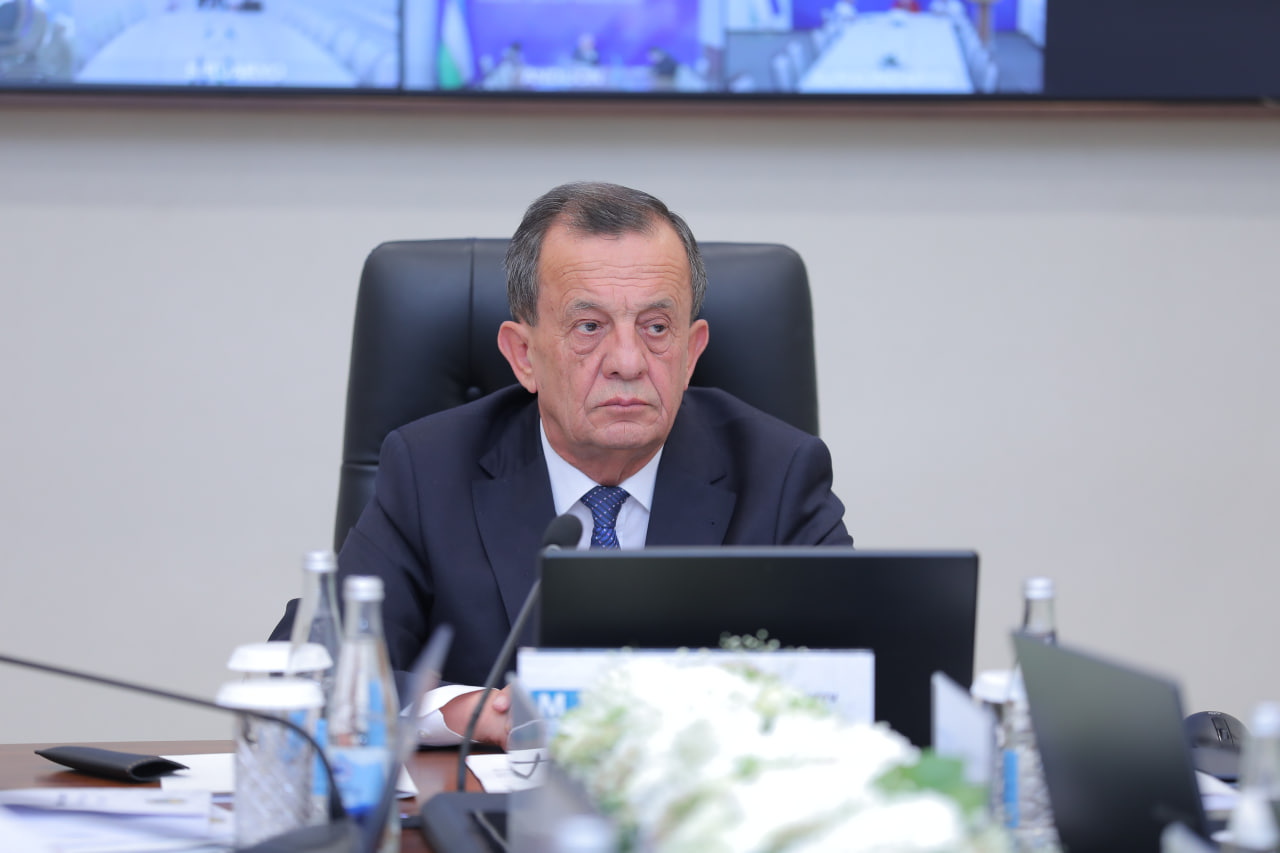
It should be noted that the Office for Democratic Institutions and Human Rights of the Organization for Security and Cooperation in Europe intends to participate in the observation of the elections in Uzbekistan with a comprehensive mission consisting of a core group, long-term and short-term observers, about 350 observers in total.
The great interest of foreign states and international organizations in the elections in Uzbekistan testifies to the international community's recognition of the democratic reforms being carried out in our country.
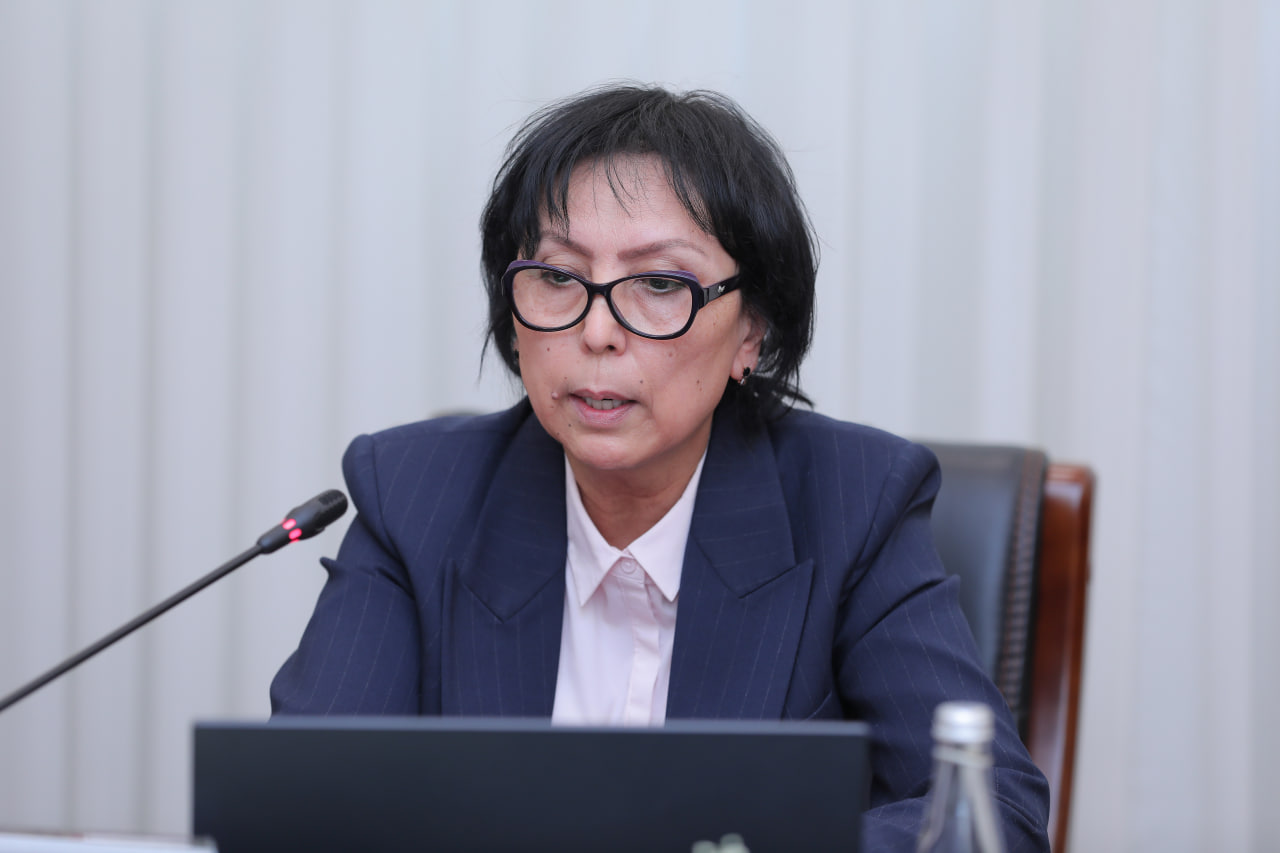
Accordingly, it was decided at the Central Election Commission meeting to accredit observers from international organizations who will participate in the elections to the Legislative Chamber of the Oliy Majlis and the local Councils (Kengashes), and some observers from international organizations such as the Commonwealth of Independent States, the CIS Inter-parliamentary Assembly and the Office for Democratic Institutions and Human Rights of the Organization for Security and Cooperation in Europe were accredited.
As of today, foreign and international organizations wishing to accredit observers can log into the “E-Saylov” information system in their country and enter data electronically in a specific format and submit it for review.
Another notable aspect of this process is that new samples of mandates of accredited foreign observers are automatically generated electronically through this system.

Also at the meeting of the Central Election Commission, the relevant decision was taken on the establishment of the Instant Information Center – “Call Center” - and the approval of its statutes. The “Call Center” will receive citizens' complaints centrally and provide them with legal explanations and consultations in real time.
The main objectives of the “Call Center” are to establish a dialog with citizens in real time during the election campaign, to provide the population with complete and reliable information on the activities of the commissions, the stages of the electoral process, to create the necessary conditions for the unconditional realization of citizens' rights to vote and appeal, and to strengthen their awareness of electoral legislation and processes.
Central Election Commission Press Service
Uzbekistan: a focus on promoting reading
📅 24.06.2024
Libraries play a key role in education, culture, and community development, providing an invaluable resource for accessing knowledge, preserving cultural heritage, and promoting intellectual growth. In the modern information society, they remain an important institution that promotes the education and self-development of people of all ages.
President Shavkat Mirziyoyev emphasised during the opening ceremony of the People's Library under the President of the Republic of Turkey in Ankara: “Intellectual potential, high morale is what makes a nation strong. The source of this invincible power is books and libraries – the great invention of mankind”.
At the present stage, education has become one of the most important areas of state policy. The government of the Republic of Uzbekistan pays special attention to the development of this sphere, recognizing its key role in the prosperity of the country. In recent years, the republic has achieved significant success in the educational domain. These achievements are aimed at modernizing the system, improving the quality of education and training, and expanding access to education for all citizens of the country.
At the same time, special attention is paid to the promotion of reading and the fostering of the reading culture of the population. And in the Presidential Decree adopted on September 13, 2017, “On the program of comprehensive measures to develop the system of publishing and distributing book products, improving the culture of reading”, clear goals are outlined for the creation of an effective system of information and library services to the population, which served to move this area to a new stage of development and contributed to raising the level of social and information culture and the role of libraries, made it possible to develop and implement modern innovative and educational technologies that increase the competitiveness of Uzbekistan in the world market.
In addition, the Presidential Decree “On further improvement of information and library services for the population of the Republic of Uzbekistan” was adopted on June 7, 2019. The main goals of the decree are:
- improving the regulatory framework in order to ensure high-quality social guarantees to the population for information and library services;
- development of information and library institutions taking into account modern requirements;
- promoting the sustainable development of information and library services the for population in the regions;
- strengthening the material and technical base of information and library institutions;
- development of public-private partnerships in the library sector, a network of private and electronic libraries;
- expanding cooperation with Internet resources that specialize in distributing electronic books to improve the efficiency of libraries and the efficiency of servicing (including paid) users;
- ensuring the safety of information and library institutions and the safety of information and library collections as part of the national and world cultural heritage;
- formation and enhancement of the information culture of society, sustainable interest in national history and culture, enhancement and promotion of a reading culture;
- staffing information and library institutions with qualified specialists.
The adoption of this decree expands the range of services in the country, including access to electronic resources and holding cultural and educational events, as well as improving staff qualifications and introducing modern methods of user service. In addition, these changes not only contribute to the development of the information society and economic growth by attracting investment in education and culture, but also promote the formation of a literate and informed society, which is an important step in the development of the country.
The Resolution of the Cabinet of Ministers dated December 14, 2020 approved the National Program for the Development and Support of a Reading Culture for 2020-2025, which includes the publication of quality books that meet the spiritual, educational, artistic and aesthetic needs of the population; supporting the activities of publishers and artists, publishing children's literature; translation of the best examples of national and world literature; simplification of the organization of book sales; improving the delivery system for newly published books and distribution of information sources; expansion of international cooperation in the field of online ordering of foreign work, their delivery and distribution.
In turn, it should be noted that within the framework of the “Uzbekistan - 2030” Strategy, special attention is paid to the popularization of masterpieces of Uzbek and world literature. The country's leadership strives to instil in citizens a love of reading and ensure access to libraries and information services for everyone.
The Strategy “Uzbekistan - 2030” puts forward such main goals as increasing the number of young book lovers to five million, the annual creation of 100 works of art and 50 books for children and adolescents, the publication of the multi-volume book “Uzbek adabiyoti khazinasidan” (“From the Treasury of Uzbek Literature”), the 100-volume book “Jakhon Bolalar Adabiyoti Durdonalari” (“Pearls of World Children’s Literature”) in Uzbek, as well as the digitalization of a book fund of almost 40 million books.
On November 28, 2023, there was signed the Presidential Decree “On measures to implement the project “A Thousand Books for Youth”, aimed at creating a system for translating books popular in the world into Uzbek, that contribute to increasing the intellectual and scientific potential of the younger generation.
At the same time, within the framework of the “Olympiad of Five Initiatives”, the following 5 projects in the field of reading and intellectual games are annually implemented: “Young Reading Family”, “Poetry Competition”, “Young Reader”, the intellectual game “Zakovat” and the project “Example of Foreign Languages”. These projects increase the interest of young people in reading books and help expand logical thinking and knowledge through intellectual games.
The “Young Reader” and “Young Reading Family” competitions are important events held to promote reading, the spiritual enrichment of youth, and increase their intellectual potential. This competition serves to increase interest in books among young people and expand their knowledge and horizons.
Also, within the framework of the project “A Thousand Books for Youth”, the Agency for Youth Affairs will have to work on acquiring rights to use works from authors, translating them into Uzbek, and preparing for printing and publishing books on the basis of a state order and at the expense of the State budget (with the exception of books, published for state higher educational institutions).
Two stages have been established for translation into Uzbek and the publication of popular books in the world. First: a preliminary list of books is formed annually by the Expert Council. Second: the preliminary list is posted in the information systems of the Agency for Youth Affairs for selection by the population by voting, and thus the final list is formed.
The list of books published annually must include at least 20 percent of popular science works. The rights to the works prepared for publication will belong to the Agency for Youth Affairs, which will provide them free of charge to publishing houses.
It is also planned to create and ensure the continuous operation of a special mobile application that accumulates literature in the Uzbek language and provides the population with free access to a wide range of information. On the recommendation of the Expert Council, the works will be distributed to information and library institutions (including libraries of public and administration authorities), and electronic versions will be donated free of charge to the Alisher Navoi National Library of Uzbekistan and the relevant institutions of the Academy of Sciences of the Republic of Uzbekistan for wide use by readers.
The necessary spiritual, legal, material, and technical basis has been created in the Republic to develop children's literature and improve the quality of textbooks and teaching aids. The country's publishing houses have increased the publication of works by authors of world and Uzbek children's literature. In accordance with a number of documents adopted to promote book reading, systematic measures are being taken in all regions to popularise literature among children and adolescents. Over the past four years, a number of presidential decrees and government resolutions have been adopted to guide the country's publishing, printing, and bibliographical information institutions.
Thus, bibliographical information services play a critical role in ensuring public well-being by providing citizens with easy access to information, knowledge, and culture. In addition, the development of digital services, collaboration with communities, and the use of new technologies strengthen the role of libraries as centres of learning, information, and communication. This helps to enhance the capabilities of people and stimulates their desire for education. The development of the potential of information and library services contributes to lifelong learning, self-improvement, cultural and spiritual enrichment of the population. This is of crucial importance for modern society.
Ramzidin Nuridinov
Expert of the Development Strategy Center.
Uzbekistan and Belgium: Toward a New Stage of Strategic Partnership with the European Union
📅 29.10.2025
In October, the President of the Republic of Uzbekistan, Shavkat Mirziyoyev, will pay a state visit to the Kingdom of Belgium, during which important decisions are expected to be made that will mark a qualitatively new stage in relations between Uzbekistan and the European Union. In particular, the visit will feature the signing of the Agreement on Enhanced Partnership and Cooperation.
In recent years, Uzbekistan has been actively shaping a new framework of engagement with Europe – a key pillar of stability amid current geopolitical tensions and global economic uncertainty. The ties between Uzbekistan and European countries continue to grow, and the areas of cooperation are diversifying, supported by the ongoing reforms in Uzbekistan.
Building a New Chapter in Relations
After gaining independence, Uzbekistan’s relations with the European Union developed dynamically. A Memorandum of Understanding between the Government of Uzbekistan and the European Commission was signed in 1992, followed by the establishment of diplomatic relations in 1994. The foundation of cooperation was laid by the Partnership and Cooperation Agreement (PCA) signed in June 1996 and entering into force in 1999. However, at a certain stage, cooperation faced difficulties due to the insufficient pace of democratic reforms in Uzbekistan.
With the election of Shavkat Mirziyoyev as President, the situation changed dramatically. As early as 2017, during his visit to Tashkent, Stefano Manservisi, Director-General for International Cooperation and Development of the European Commission, stated that “the EU regards Uzbekistan as a strategic partner.” The sweeping democratic and economic reforms launched in Uzbekistan helped resolve within a short period many issues that had long remained unsolved. Forced labor was completely eradicated, and reforms in the cotton sector enabled the country to abandon raw cotton exports altogether.
As reforms advanced, the legal and institutional framework of relations with Europe expanded rapidly. While previously Uzbekistan and the EU granted each other most-favored-nation treatment under the PCA, in April 2021 the EU granted Uzbekistan GSP+ beneficiary status, and in 2022 the Enhanced Partnership and Cooperation Agreement (EPCA) was initialed.
Along with internal transformation, Uzbekistan’s foreign policy architecture also changed. Priority was given to closer cooperation with neighboring Central Asian states, as well as the active expansion of ties with European countries – a vector that has strengthened steadily in recent years.
Just in the past year, Uzbekistan established strategic partnership relations with France, Italy, and Slovakia, while discussions on expanding strategic cooperation with Hungary continued. President Mirziyoyev also visited Slovenia, and Italy’s Prime Minister and Bulgaria’s President visited Uzbekistan.
A milestone in strengthening relations between Uzbekistan and Europe, and between Europe and Central Asia as a whole – was the first EU–Central Asia Summit, held in Samarkand in April 2025 under the chairmanship of Shavkat Mirziyoyev. Uzbekistan presented a broad range of initiatives to create a new model of regional cooperation between Central Asia and Europe, including: a multilateral agreement on investment protection and promotion; the launch of a Central Asia–EU Joint Chamber of Commerce; the adoption of a regional support program for SMEs and women’s entrepreneurship; the establishment of an investment platform to promote regional projects in green energy, innovation, transport, infrastructure, and agriculture.
The Samarkand Summit was highly productive. A Joint Declaration was adopted, establishing a strategic partnership between the two regions in trade, transport, energy, digital connectivity, and water management. European Commission President Ursula von der Leyen announced that the EU had prepared a €12 billion investment package for Central Asia under the Global Gateway initiative.
The Trajectory of Economic Cooperation
Uzbekistan’s deep democratic transformations have significantly improved relations with European countries. Economic reforms have enhanced the competitiveness of Uzbekistan’s economy, stimulating investor confidence and growing interest from European businesses.
The results are impressive. Over the past 8 years, Uzbekistan’s GDP has doubled, reaching $115 billion in 2024. Since 2017, investment in fixed capital has totaled $240 billion, of which foreign investment exceeded $130 billion. The country’s foreign exchange reserves surpassed $48 billion for the first time in history. Structurally, the share of industry in the economy increased from 20% to 26%, and services from 44% to 47%. Labor productivity (GDP per employed person) rose by 45%.
As a result, opportunities for mutually beneficial cooperation between Uzbek and European businesses have expanded. Between 2017 and 2024, Uzbekistan’s trade with the EU increased 2.4 times to $6.4 billion; exports grew 3.6 times to $1.7 billion, and imports 2.2 times to $4.7 billion. In 2024, the EU’s share in Uzbekistan’s total trade turnover was 9.7%, in exports 6.3%, and in imports 12%. The EU ranked third among Uzbekistan’s trade partners, after China and Russia.
The EU’s share in Uzbekistan’s total exports increased from 3.8% to 6.3% over the same period. This growth was driven by Uzbekistan’s accession to the GSP+ preferential trade system, granting duty-free access to the EU market across roughly 6,200 tariff lines. The share of Uzbekistan’s exports benefiting from GSP+ reached 59%, with a preference utilization rate of 84%, indicating efficient use of trade benefits.
In 2024, Uzbekistan’s exports to the EU were dominated by chemical products (52.1%), as well as textiles, ferrous and non-ferrous metals, minerals, and food products. Among EU members, France accounted for 47.2% of exports, Lithuania for 10%, and Latvia for 6.9%.
Uzbekistan’s imports from the EU significantly exceeded exports – a reflection of the ongoing technological modernization of the national economy. Around 16% of Uzbekistan’s total imports of machinery, equipment, and transport vehicles come from EU countries.
Investment cooperation is also expanding rapidly. In 2024, foreign investments and loans from EU countries and their financial institutions increased by 77%, reaching $4.1 billion (compared to $2.3 billion in 2023). The most active investors were Germany ($1.37 billion), the Netherlands ($1.05 billion), Cyprus ($858.9 million), the Czech Republic ($137.8 million), Italy ($99.8 million), and Sweden ($97.5 million). Today, around 1,000 enterprises with EU capital operate in Uzbekistan, with a total project portfolio of €30 billion.
A special role in recent years belongs to the EBRD, of which Uzbekistan has become one of the largest beneficiaries. The Bank’s total investments in Uzbekistan’s economy exceeded €5 billion, including around €1 billion in 2024, primarily directed toward the private sector.
Reforms in Uzbekistan have become the key driver for unlocking the significant potential of trade and economic cooperation with the European Union.
Uzbekistan–Belgium
The upcoming visit will also focus on strengthening relations between Uzbekistan and Belgium. Diplomatic relations were established following the opening of the Embassy of Uzbekistan in Brussels in 1993. In 1996, the two countries signed an Agreement on avoidance of double taxation, and in 1998 – an Agreement on mutual protection and promotion of investments, which provide legal guarantees for investors in both states.
Business contacts have intensified in parallel with Uzbekistan’s reform agenda. The visits of 2019 and 2022 set the tone for cooperation in infrastructure, energy, and the digital economy. More important than the current trade volumes has been the recognition and support of Uzbekistan’s reforms by EU partners, laying the foundation for long-term engagement.
In 2024, bilateral trade amounted to $62.3 million, including $7.3 million in Uzbek exports and $55 million in imports. Investment cooperation is gaining momentum: several dozen companies with Belgian capital now operate in Uzbekistan, including wholly owned enterprises. New technologies are being localized, for example, Jaga Climate Designers is participating in a joint venture for heating and ventilation systems, and Picanol Group is localizing the assembly of high-tech textile machinery. Belgian brands Belcolade and Prefamac are exploring opportunities to launch chocolate production with subsequent localization.
Despite modest trade volumes, there is significant potential for expanding cooperation in several areas. Given Belgium’s leading role in pharmaceuticals and biomedical research and Uzbekistan’s growing pharmaceutical market, joint ventures or industrial clusters could be developed in this sector, involving companies such as UCB and Janssen Pharmaceutica.
There is also strong potential for joint fruit and vegetable processing projects in Uzbekistan, targeting exports to the EU via Belgian logistics hubs such as the Port of Antwerp and wholesale markets. Potential partners include Greenyard and Puratos. Direct seasonal exports of fresh fruits (e.g., grapes in autumn and winter), as well as dried vegetables, spices, and organic products, could also be expanded. In light industry, there is room to increase exports of ready-made knitwear and home textiles, provided European quality and safety standards are met. The market potential is evident – Belgium imported about $7.9 billion worth of clothing in 2024.
The main challenges remain logistics and standards. Belgium functions as a major EU maritime hub centered around Antwerp, while direct routes from Uzbekistan are still limited. The near-term priority should be pilot supply chains ensuring quality and traceability, the development of cold logistics, certification under EU technical and sanitary regulations, the use of Benelux consolidation hubs, and trade finance tools for SMEs. With the gradual development of new overland routes along the Middle Corridor, Uzbekistan will gain a stronger foothold in high value-added exports without higher costs or delivery delays.
Conclusion
Uzbekistan is entering a stage of deepened economic cooperation with the European Union. During the ongoing modernization and digital transformation of its economy, European investment, technology, education, and research experience can play a key role. At the same time, Uzbekistan seeks to expand exports of industrial goods as their quality improves.
Uzbekistan is also a rapidly growing market with a young and dynamic population, now reaching 38 million people – an 18% increase since 2017. Every year, around 700,000 economically active individuals enter the labor market, forming a substantial human resource base for the economy, including joint ventures.
As a result of poverty reduction policies, living standards and household incomes have risen significantly. Whereas a third of the population once lived below the poverty line, 7.5 million people have been lifted out of poverty, and the poverty rate declined to 8.9% in 2024, with plans to reduce it further to 6% this year. These policies not only address social challenges but also expand domestic demand, increasing the interest of European businesses in entering Uzbekistan’s market.
The further deepening of Uzbekistan’s economic engagement with the EU and Belgium is an objectively mutually beneficial process – one that will define the success of the upcoming state visit of President Shavkat Mirziyoyev to Belgium.
The agreements expected to be signed will help advance joint projects in sustainable energy and infrastructure, strengthen transport and technological connectivity between Central Asia and Europe, and position Europe as a key partner in Uzbekistan’s long-term growth and modernization trajectory.
Obid Khakimov,
Director of the Center for
Economic Research and Reforms
Reforms in Uzbekistan are based on the principle “The stronger public control, the more humane, free and fair the state is”
📅 25.07.2024
The most important sign of civil society is manifested in the fact that citizens exercise complete control over the activities of state structures. According to article 36 of the new version of the Constitution of Uzbekistan, our citizens have the right to participate directly and through their representatives in the management of the affairs of society and the state. Such participation is carried out through self-government, referendums and the democratic formation of state bodies, as well as public control over the activities of state bodies. The procedure for exercising public control over the activities of state bodies is established by law.
In order to organize and regulate relations in the field of public control over the activities of state bodies and institutions, the law “On Public Control” was adopted on April 12, 2018. According to this law, public control is carried out in such forms as appeals and requests to state bodies, public discussions, public hearings, public monitoring, and the study is carried out by citizens' self-government bodies in such forms as hearing reports and information from officials of state bodies.
Consistent work is underway in our country to implement public control and improve the regulatory framework governing this area. By presidential decree dated May 4, 2018, the badge "For contribution to the development of civil society" was established; the decree of the President of Uzbekistan dated July 4, 2018 "On measures to organize the activities of public councils under state bodies" was of great importance for accelerating work in this area. This resolution establishes the procedure for organizing the main tasks, functions, powers and activities of the public council under state bodies, which basically provides that the public council is created by the decision of the head of the state body, carries out its work on a voluntary basis and it is assumed that it will conduct its work on a public basis, as well as be considered as a permanent advisory body whose decisions will be advisory in nature.
As Shavkat Mirziyoyev noted, “There is no more effective tool for achieving the supremacy of the Constitution and the law than public control.” Public control is an important institution of democracy and people's power; it serves to ensure the protection of the rights and legitimate interests of citizens by monitoring the activities of state bodies.
In recent years, special attention has been paid in our republic to ensuring the participation of citizens in the management of society and public affairs, the creation of effective mechanisms for public control over the activities of the executive branch, and further strengthening the functions of public control. In particular, at the initiative of the President of Uzbekistan, a public chamber was established in 2020 in order to further strengthen public control and establish close cooperation between the state and society. It was noted that the public chamber should regularly study the opinion of the population, set specific tasks for government agencies to find solutions. The importance of implementing such influential forms of control as "public hearings", "public monitoring", "public expertise", and "public initiative" was demonstrated.
According to the decree of the President of the Republic of Uzbekistan "On measures to expand financing of projects formed on the basis of public opinion", adopted on October 25, 2022, an additional 335 billion soums were allocated for the implementation of 364 projects, each of which received more than 2 thousand votes in July-September 2022.
In recent years of modern development in our republic, the system of public administration has been improved, effective mechanisms of dialogue with the people have been introduced, and the effectiveness of the role and activities of the Mahalla Institute in the management of society has increased. Virtual and public reception rooms of the President of the Republic of Uzbekistan were created in order to ensure human interests, knowledge and solution of problems and needs of people. These structures have become a mechanism for in-depth analysis of problems on the ground and a criterion for increasing the responsibility of state bodies and officials to society and evaluating their activities.
To date, such systems as "online reception" and "virtual visit" have been introduced, allowing for quick and economical identification of problems on the ground in order to optimize their expenses related to the maintenance of the public administration apparatus, eliminate corruption factors and establish effective public control over budget spending.
As an example, it is worth mentioning that in recent years a new system of dialogue with the people has been created – the activities of the presidential virtual and people's reception rooms. Of the 9,465,000 applications received by the virtual reception of the President, about 9,379,000 have been considered, the rest are also being resolved in accordance with the procedure established by law. The results of the public discussion can also be found on the "portal for discussions of draft regulatory legal acts" (regulation.gov.uz), which is clearly seen in the example. To date, 25384 draft regulatory legal acts have been posted on this portal for public discussion, of which 25183 have already been completed.
In recent years, the study of public opinion has become publicly available. The Open Budget portal was launched to exercise public control over targeted budget expenditures. Citizens can send messages about violations of budget legislation through the Portal, suggestions for improving the budget process, while receiving information such as the state budget, budget execution through this portal. In particular, an initiative budget has been launched through the Open Budget information portal, which is held 2 times a year. Thanks to this portal, citizens are focused on solving problems through joint voting. In the first season (February) 2024, 35,575 initiatives were supported, for which 3,390.5 billion soums were allocated.
Establishing the accountability of public authorities to parliament and local councils, as well as the introduction of the Electronic Government system, led to a further strengthening of public control. As a result, today in our country there is a single interactive portal of public services (my.gov.uz), an open data portal (data.egov.uz), a portal for discussing draft regulatory documents (regulation.gov.uz), and a complex of information systems “License" (license.gov.uz), information system for automating the activities of Single Window centers (birdarcha.uz).
Since 2023, in order to improve the system for identifying and solving social problems among the population in our republic, the practice of monthly hearing information from the heads of relevant government bodies and organizations in the mahalla council has been established, and new forms of public control have been introduced - “mahalla control” groups and “survey” institutions mahalla chairmen." Also, on behalf of the President, the “digital mahalla” system and the “people’s control” platform were improved.
The “My Opinion” web portal, which is under the jurisdiction of the Public Chamber, was created in order to expand the opportunities of citizens in our country to participate in the management of the affairs of society and the state, to ensure the openness of the activities of representative bodies of state power, to ensure the viability and effectiveness of the public administration system. Through this portal, a citizen can send proposals on legislation on important issues of state and public importance in the form of an electronic collective appeal. The My Opinion web portal, which is under the jurisdiction of the Public Chamber, was created in order to expand the opportunities of citizens in our country to participate in the management of the affairs of society and the state, to ensure the openness of the activities of representative bodies of state power, to ensure the viability and effectiveness of the public administration system. Through this portal, a citizen can send proposals on legislation on important issues of state and public importance in the form of an electronic collective appeal "Meningfikrim.uz "(My opinion). To date, more than 6670 collective appeals and about 30,000 comments have been received through the portal.
In recent years, political parties, which are considered to be one of the main actors of civil society in our country, have been given not only ample opportunities for free participation in elections, but also control over the executive branch. Political parties also have the right to exercise public control based on the interests of the public and their electorate. During election processes, local observers at polling stations consist of representatives of political parties and citizens' self-government bodies.
The role of the media in developing openness and transparency in our society, establishing public control over the activities of government bodies and their officials, studying and resolving legal appeals from citizens is also incomparable. In particular, the number of media registered in 2016–2023 increased by 41%, that is, in 2016 their number was 1614, and by 2023 it reached 2140. The number of mobile Internet users also exceeded 33 million.
As can be seen from the above, the main purpose of public control is to ensure respect for the rights, freedoms and legitimate interests of citizens, to ensure legality in the activities of state bodies and officials, and to protect the interests of society.
The Uzbekistan 2030 strategy, developed based on the results of public discussions in order to create a fair and modern state serving the people, identified such priority tasks as: creating the necessary conditions for public participation in the activities of local councils, broad involvement of civil society institutions and the gradual digitalization of their activities, establishing the practice of assessing the activities of heads of state bodies and their deputies based on public opinion, and intensified continuation of work to form an unparalleled attitude towards corruption in society.
As a result of public control, the activities of state bodies in the country are objectively studied, their shortcomings are identified, various violations of legislation are prevented, public participation in the implementation of laws and their preparation is ensured, broader conditions are created for the prompt solution of various problems in society and the will of the population, and special attention should be paid to the fact that public control implies not only control over the quality of the work performed, but also the use of opportunities, as well as participation in their development.
In conclusion, I would like to note that in our republic, constitutional status has been given a state public control. In the new Uzbekistan, the participation of citizens in the management of the affairs of society and the state, including the development and improvement of public control over the activities of state bodies, provides ample opportunities for the full-fledged formation and strengthening of civil society in our country. If the public control in the country is strong, the state is more humane, free and fair.
N.S.Rasulova, candidate of historical sciences Associate professor of the University of Public safety of the Republic of Uzbekistan

